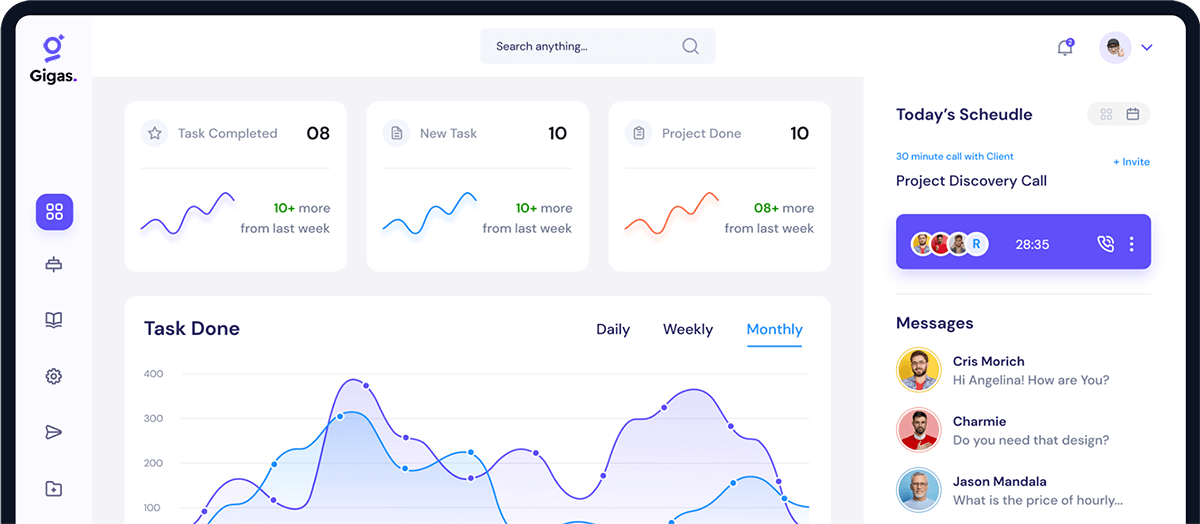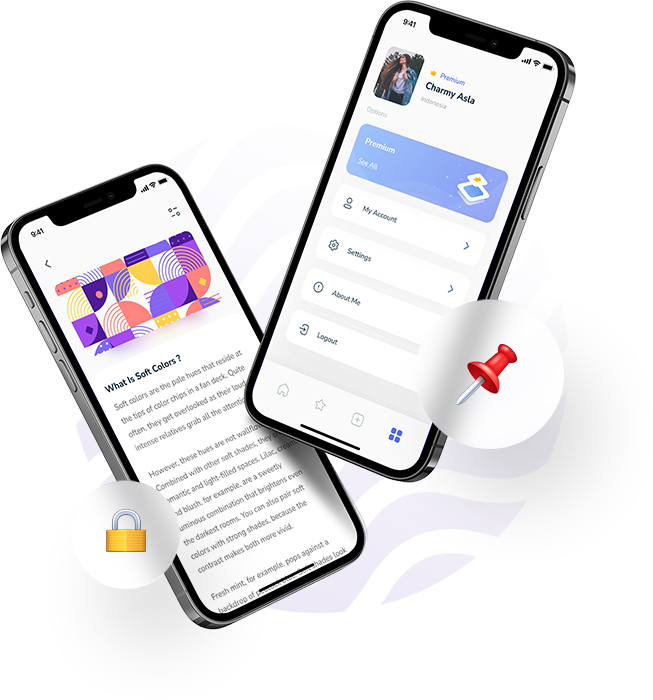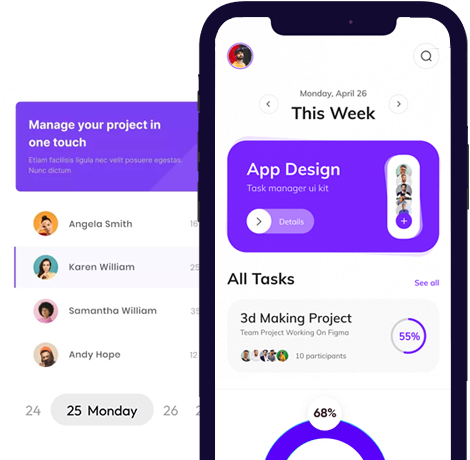Recipefi Smart Soft Solutions
Recipefi is an intuitive and powerful app designed to help restaurants manage their food inventory, track ingredient usage, and streamline the process from purchase to sale.



Why choose Us?
Recipefi App
Recipefi is an intuitive and powerful app designed to help restaurants manage their food inventory, track ingredient usage, and streamline the process from purchase to sale.
Whether you’re a small café or a large chain, Recipefi ensures that you have complete visibility over every ingredient that enters your kitchen, how it’s used, and how it contributes to your bottom line.
From tracking purchases of raw ingredients to monitoring their use in menu items and orders, Recipefi gives you full control over your restaurant’s food operations. This platform integrates seamlessly with your POS system, customer websites, delivery platforms, and e-commerce payment systems to offer end-to-end tracking that helps minimize waste and control food costs.
Our Features
Key Features
Real-Time Inventory Tracking
Track every ingredient in your inventory, from bulk items like meat and produce to individual components like cheese slices and condiments. As orders are placed and items are used, inventory counts are updated in real-time, giving you an accurate view of what’s in stock at any moment.
Granular or Non-Granular Tracking
Ingredient Breakdown in Orders
- 1 patty burger
- 1 bun
- 1 slice of cheese
- 1 serving of lettuce
- 1 serving of ketchup
Inventory Purchase Tracking
Link each food purchase to its corresponding ingredients. Whether you’re buying bulk ingredients or pre-processed items, Recipefi tracks every purchase, so you know exactly where every dollar spent is going. This ensures better budgeting and helps you track supplier performance.
Waste Control and Expense Management
Control your food costs by identifying waste patterns in your kitchen. Recipefi helps you monitor ingredient usage against actual sales, reducing over-ordering and preventing spoilage. By tracking what is used in each order, you can make data-driven decisions to minimize waste and keep costs in check.
POS, Delivery, and E-Commerce Integration
Sales & Expense Insights
Mobile-Friendly and Easy to Use:
Why choose Us?
Why Choose Recipefi?
Comprehensive Tracking
Cost Control
Integration Across Systems
Data-Driven Insights
Waste Reduction

Ideal for
Restaurants
Cafés and bakeries
Catering services
Food trucks
Multi-location chains
Our
BENEFITS
Streamlined Inventory Management
- Real-Time Tracking: Recipefi automatically updates inventory levels in real-time as ingredients are used in orders. This ensures you always have an accurate, up-to-date picture of what’s in stock, preventing stockouts or overstocking.
- Reduced Overstocking/Waste: By accurately tracking ingredient usage, the app helps you order only what you need, reducing spoilage, wastage, and unnecessary purchases.
- Granular Tracking: You can track ingredients down to the most granular level, such as individual portions or exact quantities used, providing precise control over your stock.
Improved Food Cost Control
- Cost Transparency: Recipefi gives you a clear view of how much each dish costs to prepare by tracking ingredient usage and purchases. This enables better pricing decisions and improves overall profitability.
- Waste Reduction: By monitoring ingredient usage against actual sales, Recipefi helps identify waste patterns (e.g., over-portioning or spoilage), allowing you to reduce food waste and control costs.
- Budget Management: Track and compare food purchases against sales, allowing you to adjust your purchasing strategies and maintain a healthier food cost ratio.
Seamless Integration with Existing Systems
- POS Integration: Recipefi integrates with your POS system, so every order placed automatically updates inventory levels, saving time and reducing manual data entry errors.
- Online and Delivery Platform Sync: Whether your customers order through your website, third-party delivery platforms (UberEats, DoorDash), or in person, Recipefi tracks ingredient usage for all types of sales, ensuring consistency and accuracy across all channels.
- E-Commerce Integration: If your restaurant also sells packaged items or merchandise, Recipefi can sync with e-commerce platforms to track both food sales and non-food inventory.
4. Data-Driven Insights
- Sales and Expense Reporting: The app generates detailed reports that provide insights into sales trends, ingredient usage, and overall profitability. With these reports, you can identify which menu items are most profitable, adjust portions, and optimize pricing.
- Trend Analysis: Track fluctuations in ingredient usage and sales over time to identify patterns. This can help you optimize your menu based on customer preferences and seasonal trends.
- Supplier Management: Track which suppliers provide the best value for ingredients, helping you make smarter purchasing decisions and negotiate better pricing.
5. Optimized Menu and Order Management
- Menu Item Costing: Recipefi calculates the exact cost of each menu item based on the ingredients used, allowing you to price items appropriately to maintain margins and profitability.
- Order-Level Tracking: When a customer places an order, Recipefi automatically deducts the required ingredients from the inventory, helping you monitor exactly what has been used and ensuring you’re never caught off-guard with low stock.
- Portion Control: Maintain consistent portion sizes across all orders, ensuring quality and helping control food costs more effectively.
6. Operational Efficiency and Time Savings
- Automated Updates: As orders are made, inventory and sales data are automatically updated, saving time and reducing the need for manual inventory checks and reconciliations.
- Easy-to-Use Interface: The app is designed to be user-friendly, making it accessible for both front-of-house and back-of-house staff without requiring extensive training.
- Task Automation: Automate key tasks like inventory updates, ingredient tracking, and report generation, allowing staff to focus on more important tasks such as customer service and food preparation.
7. Enhanced Control Over Waste and Loss Prevention
- Track Waste: Whether it's food scraps, spoiled ingredients, or misplaced orders, Recipefi helps you track waste sources. With this data, you can take proactive steps to minimize unnecessary loss.
- Loss Prevention: By integrating inventory tracking with sales data, you can identify discrepancies, preventing theft or errors in inventory management.
8. Scalability and Flexibility
- Adaptable to Any Size Operation: Whether you run a small café or a multi-location restaurant chain, Recipefi can scale to meet your needs. The app can be used in a single location or across multiple branches, offering centralized control and reporting.
- Customizable Features: You can choose the level of tracking granularity and reporting that best suits your restaurant's needs, offering flexibility as your business grows.
9. Enhanced Decision-Making
- Real-Time Insights for Better Decisions: With access to up-to-the-minute data on inventory levels, ingredient costs, and sales trends, Recipefi helps restaurant owners and managers make informed decisions about purchases, menu pricing, and resource allocation.
- Forecasting: Predict future inventory needs based on sales trends and historical data, helping you prepare for busy periods and manage seasonal fluctuations.
10. Sustainability and Eco-Friendliness
- Waste Reduction = Environmental Impact: By minimizing food waste, you’re not only saving money but also contributing to sustainability efforts by reducing your carbon footprint. The app helps reduce excess ordering, improper storage, and unnecessary food waste.
In Summary, the Benefits of
Recipefi Are
Cost Control
Operational Efficiency
Comprehensive Tracking
Seamless Integration
Data-Driven Insights
Waste and Loss Prevention
Scalable
Support Email
- info@recipefi.net
Explain request for merchant permissions:
Merchant permissions refer to the specific types of access an app needs from a business or restaurant (the merchant) to function effectively. These permissions typically cover access to sensitive data, such as inventory levels, sales data, transaction information, and integration with external platforms like POS systems, delivery services, and payment gateways.
In the case of Recipefi, these permissions are required for:
- Tracking Inventory: Access to inventory data so the app can update stock levels as ingredients are used in orders.
- Processing Payments: Access to payment systems to track sales and handle transactions.
- Accessing POS Data: Integration with the restaurant’s POS system to monitor sales and manage orders.
- Sending Notifications/Reports: The ability to send updates or reports to the restaurant owner/manager via email, SMS, or app notifications.
- Tracking Orders: Integration with third-party delivery platforms or e-commerce systems to sync and track incoming orders.
In the case of Recipefi, these permissions are required for:
- Automatically Update Inventory: Access to sales data and ingredient usage is critical to ensure real-time inventory tracking. As orders are placed and ingredients are used, the app will need to update inventory counts.
- Integrate with POS & Payment Systems: For streamlined operations, Recipefi needs permission to access sales data, track payments, and integrate with your existing POS system and payment processors. This allows seamless order tracking and financial reporting.
- Generate Accurate Reports: The app needs to retrieve data on sales, orders, inventory levels, and food costs to generate actionable insights and reports that help manage food costs and optimize menu pricing.
- Sync with Delivery Platforms: If your restaurant uses third-party delivery platforms (e.g., UberEats, Grubhub, DoorDash), Recipefi requires permissions to sync orders from these platforms, so ingredient usage can be tracked automatically, and inventory levels are updated in real-time.
a. Access to Inventory Data
- What it does: This permission allows the app to view and update the inventory of ingredients in real-time as they are used in orders.
- Why it's needed: To track ingredients from purchase to sale, ensuring accurate inventory levels and helping prevent overstocking or understocking.
- How it works: The app will deduct quantities from inventory as orders are placed and items are used (e.g., 1 burger patty, 1 slice of cheese).
b. POS System Access
- What it does: The app needs permission to access the merchant’s POS system (like Square, Toast, or Lightspeed) to pull order data, sales reports, and transaction history.
- Why it's needed: So that the app can track orders placed by customers, including menu items sold, and update inventory automatically when a sale occurs.
- How it works: The app syncs with the POS to capture real-time sales, reducing the need for manual input and ensuring accuracy in inventory management.
c. Access to Payment Gateways
- What it does: This allows Recipefi to track customer payments, process transactions, and link them to inventory and order data.
- Why it's needed: To accurately record payments and ensure the financial side of inventory and orders is tracked correctly.
- How it works: The app connects with payment providers (like Stripe, Square, or PayPal) to update financial reports and track revenue.
d. Access to Third-Party Delivery Platforms
- What it does: Permissions are required to access platforms such as UberEats, DoorDash, Grubhub, or others to sync incoming orders from these services with your internal inventory.
- Why it's needed: To ensure that online and delivery orders are reflected in the same system as in-house orders, allowing accurate inventory tracking and reducing the risk of overselling items.
- How it works: The app pulls order details from the delivery platform and automatically deducts used ingredients from inventory.
e. Notifications and Alerts
- What it does: This permission allows the app to send notifications and reports to the merchant, such as stock alerts, low inventory warnings, or financial reports.
- Why it's needed: To keep restaurant owners and managers updated on stock levels, orders, and other critical business insights.
- How it works: The app can send notifications when an item is running low, or when a specific sales or inventory threshold is reached.
2. Request Permission Step-by-Step:
- When the user first installs the app, provide a setup guide or walkthrough that explains the permissions being requested.
- Ask for permission to access the POS system, inventory data, and payment systems step-by-step during onboarding, rather than all at once. This reduces friction and confusion.
Example 1: Request for POS Access
Example 2: Request for Payment Gateway Access
- View and modify permissions granted to the app.
- Disconnect or reauthorize integrations (e.g., POS system or payment gateway).
- Access and update their consent preferences for notifications, marketing, and data sharing.
